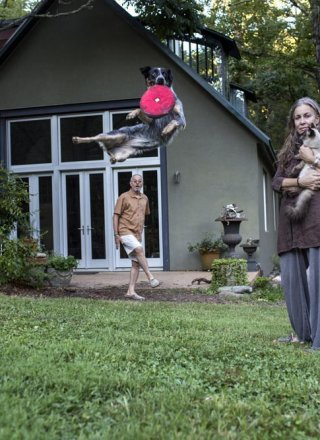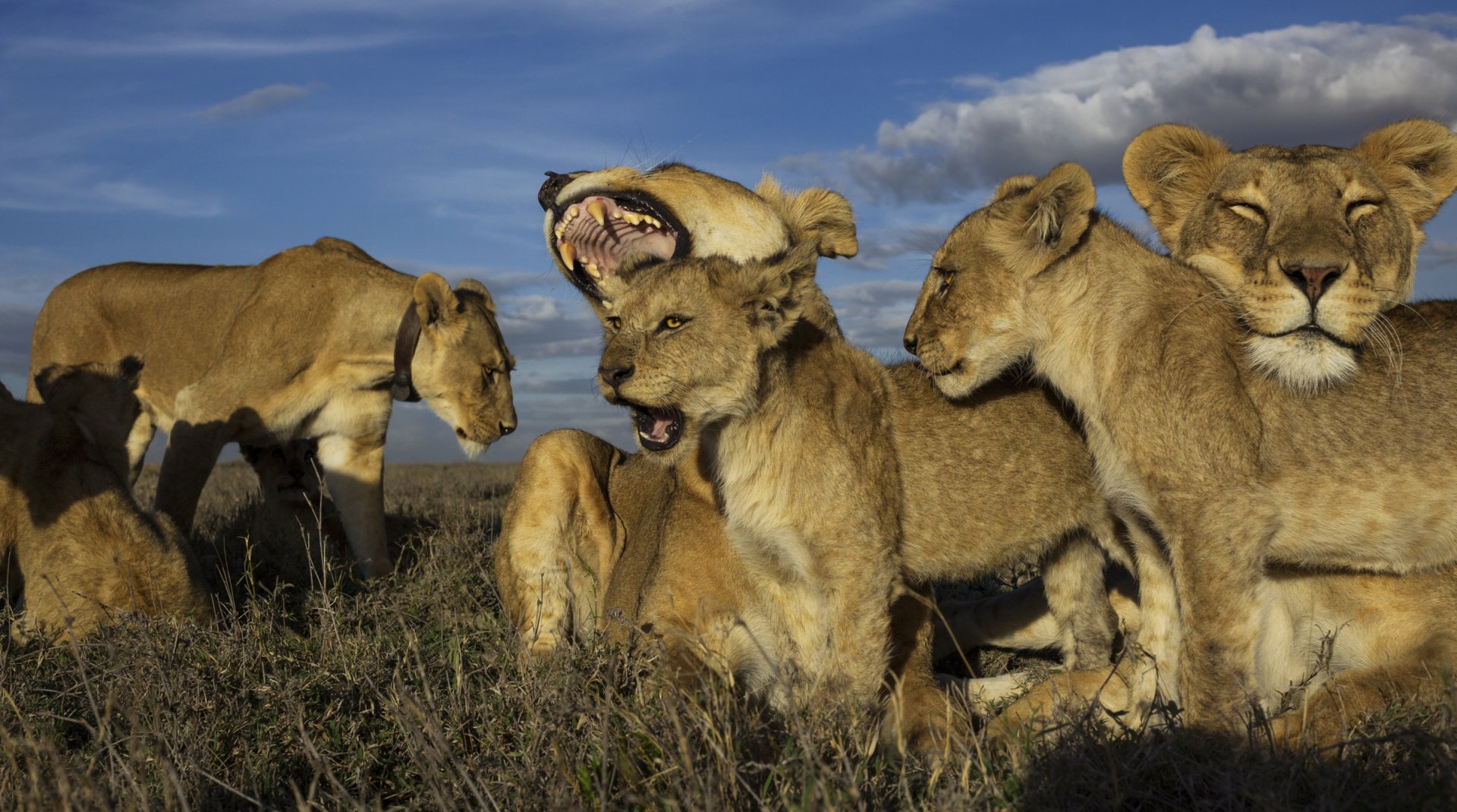
The Short Happy Life of a Serengeti Lion
Michael Nichols
National Geographic Magazine
“Tigers are solitary. Cougars are solitary. No leopard wants to associate with a bunch of other leopards. The lion is the only feline that’s truly social, living in prides and coalitions, the size and dynamics of which are determined by an intricate balance of evolutionary costs and benefits.”
David Quammen, The Short Happy Life of a Serengeti Lion, National Geographic magazine, August 2013.
The lion (Panthera leo) is synonymous with wild Africa. Few people realize that illegal killing, relentless habitat loss, and habitat fragmentation has this species in a crisis that must be addressed by the world, not just Africa.
Nearly a century ago, there were as many as 200 000 lions in Africa. Today, the most recent surveys estimate that there are fewer than 30 000 wild lions.
The August 2013 issue of National Geographic magazine (NGM) is devoted to clarifying the state of the lion with two essays by David Quammen, one with photographs by me in the Serengeti, the essential stereotypical stronghold for lions, and the other with images by Brent Stirton on the survival issues facing the only cooperative cat.
We worked in a corner of Serengeti with no tourism, hidden from view, concentrating on the four prides of females that ruled our area. One female in each pride carried a radio collar placed on her by the Serengeti Lion Project, a 35-year study that tracks 25 different prides. This allowed us to almost always find the lions. We fell in love with the Vumbi pride (Vumbi means “dust” in Swahili), a plains pride of five very close lionesses. They had nine small cubs the first day we saw them. We followed them intensively for a total of twelve months over a two-year period.
Our story in NGM focuses on the male coalition of two that sired the Vumbi cubs and the invasion they faced from the Killers, a coalition of four powerful male lions, two sets of brothers born in the same pride. We could hear and feel the Killers invasion but it was only in our last days that we realized they were taking over and killing females and cubs of two of the woodland prides we monitored. The Vumbi pride did not own valuable, fruitful real estate so they remained safe.
My goal with the photographs was to provide a new, intimate, ground level view that also showed the lions in their time — at night. This was done with a robot carrying two cameras, one for stills and one for video. We created infrared light invisible to both us and the lions so as not to disturb the cats’ delicate night vision and hunting.
Preview
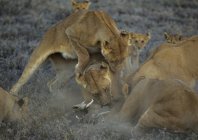
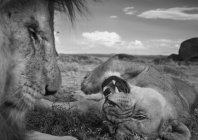
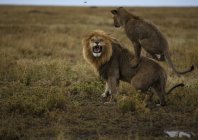
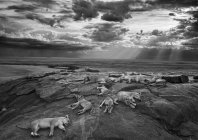
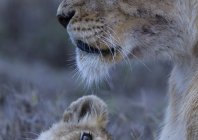

We show the images and video here at Visa without captions or explanation. This is meant to provide a purely visual and emotional response. Please read the August 2013 issue of NGM to find out the details.
This was a team effort. Reba Peck was the driver, spotter, and naturalist. Nathan Williamson did video, sound, and operated the robot tank and mikrokopter.
Tanzania National Parks (TANAPA) graciously allowed us to work and camp in a remote area of the park. Dr. Craig Packer, founder and director of the Serengeti Lion Project, gave me and NGM natural history editor Kathy Moran advice and guidance over the five years the project was in planning.
Once per week, Daniel Rosengren of the Serengeti Lion Project would visit and bring us up to date on all the prides in our area. Rob Carr-Hartley, a great friend from the David Sheldrick Wildlife Trust based in Kenya, took extreme care to find and build our “special lion car,” a converted pickup.
Finally, this obsession was supported by the National Geographic Society with a gift from Jeffrey and Darlene Anderson.
*Michael Nichols *






